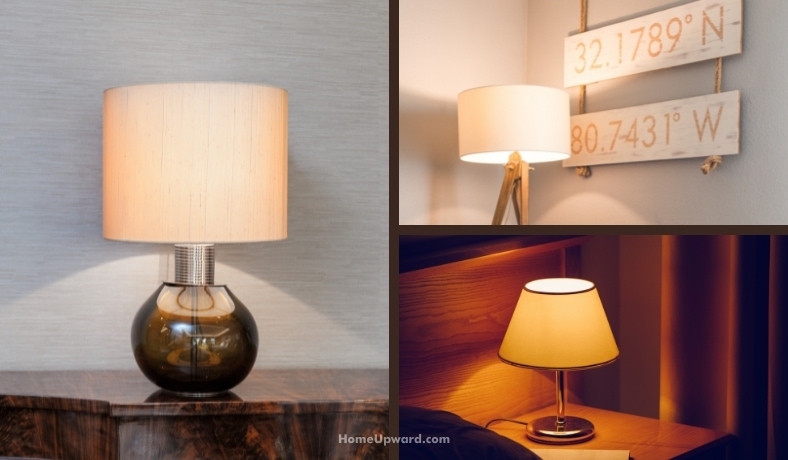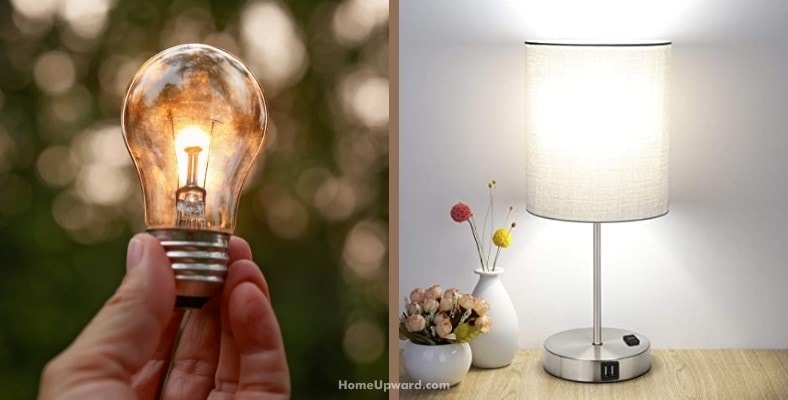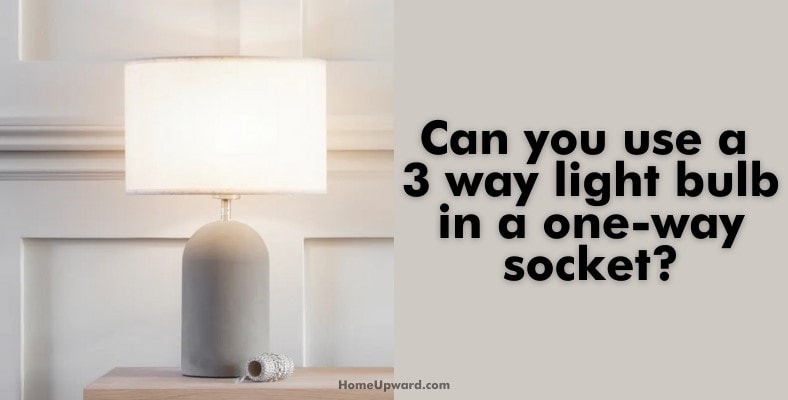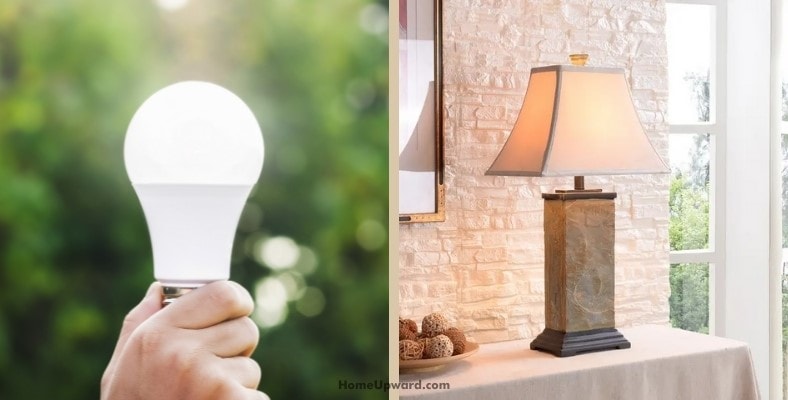Contents
How to Tell if a Lamp is 3 Way
What Makes a 3 Way Lamp?
Sometimes called a tri-light, a 3 way lamp is usually a table or floor lamp that gives off light in a way that can switch from low to medium to high. It consists of a 3 way bulb, a three way switch, and a three way socket.
The bulb could either be an LED, fluorescent, or incandescent bulb, but the incandescent type is the most common one.
Compared to regular incandescent bulbs, the 3 way bulb operates at full voltage without a dimmer switch. Therefore, the light color and intensity do not change between the three transitions.
How to Tell a 3 Way Bulb from a Standard Bulb
There is only one way to tell if a bulb is 3 way or not. Standard bulbs only have two contacts: a small metal bump at the bottom and the threaded shell around the base. Together, they direct power into and out of a single filament inside.
However, a three way bulb has a third contact point at the base. It is usually a ring around the metal bump to direct power to a second filament. Both contacts are live, but the threaded part is the neutral (negative) contact, so the filaments share this connection point.
Standard sockets also differ in design from 3 way sockets by having a third contact positioned off the center at the bottom.
As for the switch, you can only control a 3 way light bulb by using a pull-chain or rotary switch. Both have four positions, which are off, low (low voltage filament on), medium (high voltage filament on), and high (both filaments on).
The switch has two sets of contacts that are connected mechanically, not electrically, to operate the two circuits together and separately.
What Wattage Bulb Can You Use in a 3 Way Socket Lamp?
Most 3 way socket lamps have a maximum operating capacity of 150 watts, split into 50 watts for the low brightness and 100 watts for the medium setting. Together, the two circuits handle 150 watts to give the maximum brightness.
Does the Light Fixture Wattage Matter?
Yes, it does. The higher the wattage, the higher the power that the light bulb consumes, and this also directly affects the light output.
With both circuits on (150 watts), the 3 way bulb will be at its brightest, leading to high energy bills at the end of the month.
Even if the difference is negligible, I recommend using the lowest setting if you need dim light that sort of resembles the subtleness of accent lighting.
Can You Use a Regular Bulb in a 3 Way Lamp?
You can, but with only one condition, the bulb must fit in the lamp socket. A 3 way lamp fixture can handle a regular bulb with any wattage rating, but I recommend 60, 75, or 100-watt bulbs.
Remember, even if the fixture can handle up to 150 watts, this is in two circuits. As such, the maximum power you can get to the bulb is 100 watts.
However, the brightness depends on the bulb. If you install a 100-watt bull, it will be brighter than a 60-watt type.
Using a regular bulb effectively turns it into a standard lamp, and thus, you cannot change the light intensity.
One factor that might be inconvenient is the 3 way switch, which you have to pull or rotate three times to turn on the bulb, and two more times to turn it off.
Can You Use a 3 Way Light Bulb in a One Way Socket?
If you flip things around, it is possible to use a 3 way bulb in a one-way socket. There is one disadvantage, though. You can only use the medium setting, which is usually 100 watts.
A one-way socket only has two contact points through which it is impossible to power on both filaments simultaneously or use the low setting.
Why Do 3 Way Bulbs Burn Out so Fast?
Manufacturers usually give their bulbs a rating for the usage hours. In most cases, though, they do not run for that long. Here are a few reasons that cause quick burnouts.
Loose Connection
A loose connection usually occurs between the bulb and the socket, which can cause flickering. The quick on and off energizes the filament intermittently, causing it to heat up several times.
Filaments tend to break apart when an electric current suddenly passes through but are more stable when the current constantly flows. It explains why most burnouts occur when turning on the switch. Therefore, this loose connection increases the chances of the filament burning out.
Other than that, such a connection can also cause arcing, which reduces the bulb’s lifespan. 3 way bulbs are more prone to arcing because they have three contact points, so keep them tight.
Vibrations
Bulb filaments are thin strands of wire, and they need to be like this to resist as much electricity to glow white-hot.
However, this design makes them extremely delicate and vulnerable to breaking in case of excessive vibrations. 3 way bulbs are more sensitive because they have two filaments.
Ceiling fans and automatic garage doors can cause excessive vibrations, so it is best to keep 3 way lamps away from them.
Alternatively, you can install a rough service bulb or an LED bulb (filament-free).
High Voltage
In the US, the standard voltage is around 110 – 120 volts. However, some plug-in outlets for appliances like stoves and dryers usually output 220 volts, which will burn the filament instantly because 3 way bulbs require the standard voltage.
There might also be technical faults in the supply system that make the voltage go higher than usual.
Before plugging in the 3 way lamp, use a voltage tester or multimeter to measure the voltage level. The acceptable limit is 125 volts, so if it exceeds this figure, contact a licensed electrician or your local electric utility provider to solve the issue.
Do LED Bulbs Work in 3 Way Lamps?
Yes, they do. As long as the bulb fits in the socket, it will function normally, but you will not get the functionality of 3 way lighting (low, medium, or high).
If you want this feature, there are 3 way LED bulbs in the market, and they have separate circuits to power on different numbers of LEDs to achieve the low, medium, or high outputs.







